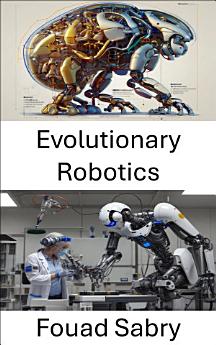Evolutionary Robotics: intelligent systems and adaptive behavior in autonomous machines
આ ઇ-પુસ્તક વિશે
2: Evolutionary computation: Explains the computational techniques inspired by evolutionary biology, such as genetic algorithms, used to solve complex optimization problems in robotics.
3: Neuroevolution of augmenting topologies: Discusses a groundbreaking approach where neural networks evolve, including both structure and weights, to optimize robotic performance.
4: Neuroevolution: Explores the process of evolving artificial neural networks to enhance the capabilities of robots, focusing on their learning and adaptability.
5: Evolvable hardware: Delivers an overview of hardware systems that evolve in response to changing environmental conditions, bringing evolutionary concepts into physical robotic systems.
6: Sbot mobile robot: Examines the Sbot mobile robot, a key example of how evolutionary robotics techniques have been applied to realworld robotic platforms.
7: Dario Floreano: Highlights the contributions of Dario Floreano, a leading researcher in evolutionary robotics, whose work has significantly shaped the field.
8: Inman Harvey: Explores the research of Inman Harvey and his innovative approaches in the integration of evolutionary algorithms with robotic systems.
9: Phil Husbands: Focuses on the work of Phil Husbands in the area of autonomous robot behavior and his contributions to the application of evolutionary methods in robotics.
10: Stefano Nolfi: Investigates Stefano Nolfi's contributions to neuroevolution and his work on creating robots that learn and evolve in dynamic environments.
11: Neurorobotics: Covers the exciting field of neurorobotics, where robotics and neuroscience converge to develop robots that can mimic biological intelligence.
12: Artificial development: Describes the emerging field of artificial development, where evolutionary and developmental principles are applied to create more complex, adaptive robotic systems.
13: HyperNEAT: Introduces the HyperNEAT framework, an advanced method for evolving neural networks that generate complex robotic behaviors and structures.
14: Morphogenetic robotics: Focuses on morphogenetic robotics, where robots selforganize and adapt their physical forms through evolutionary processes.
15: Evolutionary developmental robotics: Examines how combining evolutionary algorithms with developmental robotics leads to the creation of robots that grow and learn over time.
16: Dave Cliff (computer scientist): Discusses the work of Dave Cliff, whose research in artificial life and evolutionary algorithms has influenced the development of adaptive robots.
17: Artificial life: Explores the relationship between artificial life and robotics, discussing how creating lifelike behavior in robots can lead to more intelligent systems.
18: Jordan Pollack: Highlights Jordan Pollack’s work in artificial evolution, particularly in relation to developing systems that mimic natural processes to improve robotic performance.
19: Sabine Hauert: Focuses on Sabine Hauert’s contributions to multirobot systems and how evolutionary principles can improve collaborative robot behavior.
20: Pavan Ramdya: Explores the work of Pavan Ramdya, whose research in robotics and neurobiology integrates the study of movement and behavior in autonomous robots.
21: Genetic programming: Concludes with a look at genetic programming, a method used to evolve programs that control robot behavior, facilitating automation in complex tasks.











